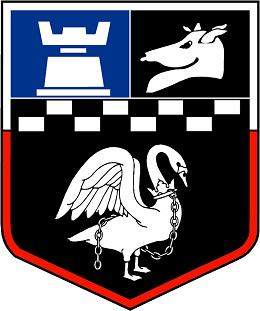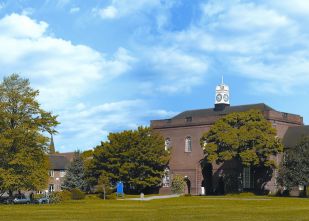External links
School types | |||||||||||
|---|---|---|---|---|---|---|---|---|---|---|---|
| By educational stage | |||||||||||
| By funding / eligibility |
| ||||||||||
| By style / purpose |
| ||||||||||
| By location | |||||||||||
| By scope | |||||||||||
| Historical |
| ||||||||||
| Related topics | |||||||||||
In England, a partially selective school is one of a few dozen state-funded secondary schools that select a proportion of their intake by ability or aptitude, permitted as a continuation of arrangements that existed prior to 1997. [1] Though treated together by current legislation, they are of two types: bilateral schools in remnants of the Tripartite System, and former grant-maintained schools that introduced partial selection in the 1990s. While technically classified as comprehensive schools, they occupy a middle ground between grammar schools and true comprehensives, and many of the arguments for and against grammar schools also apply to these schools. Although there are relatively few schools of this type, several of them score very highly in national performance tables, and are among the most over-subscribed schools in the country.
There are no partially selective schools in Scotland and Wales, which have wholly comprehensive systems, while Northern Ireland retains a grammar system.
Partially selective schools are of two types:
In 1997 a Labour government was elected, with a policy of abolishing partial selection. David Blunkett, then Secretary of State for Education and Employment, said in December 1997:
I am able to confirm that the Bill and the criteria I will lay down as part of our admissions policy will remove partial selection where it currently exists. That causes havoc in terms of the admission of local children, and denies fairness to parents because of the lack of choices and opportunities open to them. [6]
However, the School Standards and Framework Act 1998 permitted selection of up to 10% by aptitude for certain subjects for which a school is a specialist college (section 102), and also permitted the retention of partial selection that existed prior to the 1997 entry, provided that the proportion selected was no higher than that in 1997 (section 100). [7] The 1998 Act also created schools adjudicators, empowered to rule on objections to school admission arrangements, including partial selection. This mechanism has steadily reduced both the number of schools using selection and the proportion of partial selection at the remaining schools. [8] [9]
These schools often also give preference to siblings of current pupils, filling the rest of their places using distance and/or faith criteria. The sibling criterion is particularly controversial, as in combination with selection it often severely limits the number of local children admitted. In response to these concerns, the initial draft of a revised schools admissions code proposed to ban sibling criteria in schools that selected more than 10% on their intake. After many protests, the admissions code as published in February 2007 protected siblings of current students, and permitted schools to give priority to siblings provided that "their admission arrangements as a whole do not exclude families living nearer the school." [10] [11] This phrasing was removed in the revised Code published in January 2009. [12]
A late amendment to the Education and Inspections Act 2006 amended the 1998 Act to limit the proportion selected to the lowest level at any time since 1997. This forced four Hertfordshire schools to lower their proportion of academic selection from 35% to 25%. [13]
The following bilateral schools continue to operate in surviving fully selective areas: [14] [15]
To be admitted to the selective stream, applicants must achieve the qualifying standard in an eleven plus exam, typically shared with local grammar schools. In practice, some of these schools do not fill their allocation of selective places due to competition from the neighbouring grammar schools. Unlike grammar schools, they are required to fill any remaining places with non-selective applicants. [11]
The following schools retain partial selection introduced between 1993 and 1997: [14] [15]
All of these schools are over-subscribed.[ citation needed ] All except Old Swinford Hospital, Archbishop Tenison's School and the London Nautical School select the highest scoring applicants under each criterion.
{{cite journal}}: Cite journal requires |journal= (help)
A grammar school is one of several different types of school in the history of education in the United Kingdom and other English-speaking countries, originally a school teaching Latin, but more recently an academically oriented secondary school.
The eleven-plus (11+) is a standardised examination administered to some students in England and Northern Ireland in their last year of primary education, which governs admission to grammar schools and other secondary schools which use academic selection. The name derives from the age group for secondary entry: 11–12 years.
The Tripartite System was the arrangement of state-funded secondary education between 1945 and the 1970s in England and Wales, and from 1947 to 2009 in Northern Ireland. It was an administrative implementation of the Education Act 1944 and the Education Act 1947.

A comprehensive school is a secondary school for pupils aged 11–16 or 11–18, that does not select its intake on the basis of academic achievement or aptitude, in contrast to a selective school system where admission is restricted on the basis of selection criteria, usually academic performance. The term is commonly used in relation to England and Wales, where comprehensive schools were introduced as state schools on an experimental basis in the 1940s and became more widespread from 1965.
Grant-maintained schools or GM schools were state schools in England and Wales between 1988 and 1998 that had opted out of local government control, being funded directly by a grant from central government. Some of these schools had selective admissions procedures.

A secondary modern school is a type of secondary school that existed throughout England, Wales and Northern Ireland from 1944 until the 1970s under the Tripartite System. Schools of this type continue in Northern Ireland, where they are usually referred to as secondary schools, and in areas of England, such as Buckinghamshire, Lincolnshire and Wirral,.
The grammar schools debate is a debate about the advantages and disadvantages of the existence of grammar schools in the United Kingdom. Grammar schools are state schools which select their pupils on the basis of academic ability, with pupils sitting an exam in the last year of primary school to determine whether or not they gain a place. The debate on selective education has been widened by measures which allow a proportion of students to be chosen based on their "aptitude" for a particular subject.
Secondary technical schools, referred to colloquially as secondary techs or simply techs, were a type of secondary school in England and Wales that existed in the mid-20th century under the Tripartite System of education. Few were built; their main interest is theoretical.
A selective school is a school that admits students on the basis of some sort of selection criteria, usually academic. The term may have different connotations in different systems and is the opposite of a comprehensive school, which accepts all students, regardless of aptitude.

Watford Grammar School for Boys is an 11–18 boys partially selective academy in Watford in Hertfordshire, England. The school and its sister school, Watford Grammar School for Girls, descend from a Free School founded as a charity school for boys and girls by Elizabeth Fuller in 1704.

Chesham Grammar School is a co-educational academy school on White Hill, Chesham, Buckinghamshire. There are about 1,300 pupils aged between eleven and eighteen, including over 400 in the sixth form. In 2007, the Department for Education awarded the school specialist school status as a Humanities College. In August 2011 the school became an Academy.

The John Fisher School is a Roman Catholic voluntary-aided boys' faith school based at Peaks Hill, Purley, Croydon, Surrey, England. The school is located in and funded by the London Borough of Sutton. It occupies the former site of the 19th-century prep school Falconbury School. The school operates as a faith comprehensive School, educating boys mainly from south and central Croydon. It has a history of selection, and has drawn pupils from across London and South East England.
Queens' School, near Watford, Hertfordshire, is a partially selective secondary school and sixth form with academy status. It currently is a specialist science and sports college.

Watford Grammar School for Girls is an academy for girls in Watford in Hertfordshire, UK. Despite its name, it is only a partially selective school, with 25% of entrants admitted on academic ability and 10% on musical aptitude.

A direct grant grammar school was a type of selective secondary school in the United Kingdom that existed between 1945 and 1976. One quarter of the places in these schools were directly funded by central government, while the remainder attracted fees, some paid by a Local Education Authority and some by the pupils' parents or guardians. On average, the schools received just over half of their income from the state.

The School Standards and Framework Act 1998 was the major education legislation passed by the incoming Labour government led by Tony Blair. This Act:
Selective Catholic schools were Roman Catholic secondary schools that existed in England until the beginning of the twenty-first century. They emerged out of successive governments' desire to create a free market in the state education system. These schools were able, primarily through selecting by interviewing prospect pupils along with their parents, to attract pupils from motivated families who were committed to the education and advancement of their children and to the schools themselves.

English state-funded schools, commonly known as state schools, provide education to pupils between the ages of 3 and 18 without charge. Approximately 93% of English schoolchildren attend such 24,000 schools. Since 2008 about 75% have attained "academy status", which essentially gives them a higher budget per pupil from the Department for Education.

A comprehensive school, or simply a comprehensive, typically describes a secondary school for pupils aged approximately 11–16 or 11–18, that does not select its intake on the basis of academic achievement or aptitude, in contrast to a selective school system where admission is restricted on the basis of selection criteria, usually academic performance. In England and Wales comprehensive schools were introduced as state schools on an experimental basis in the 1940s and became more widespread from 1965. They may be part of a local education authority or be a self governing academy or part of a multi-academy trust.
The Greenwich judgment of 1990 declared as unlawful a decision by the local education authority (LEA) of the London Borough of Greenwich to give priority in school admissions to its own residents over residents from neighbouring LEAs, clarifying that applicants must be treated equally, whether they reside inside or outside the authority. It has been associated with a decline in the use of catchment areas as a means of managing school admissions, and an associated increase in cross-border mobility.